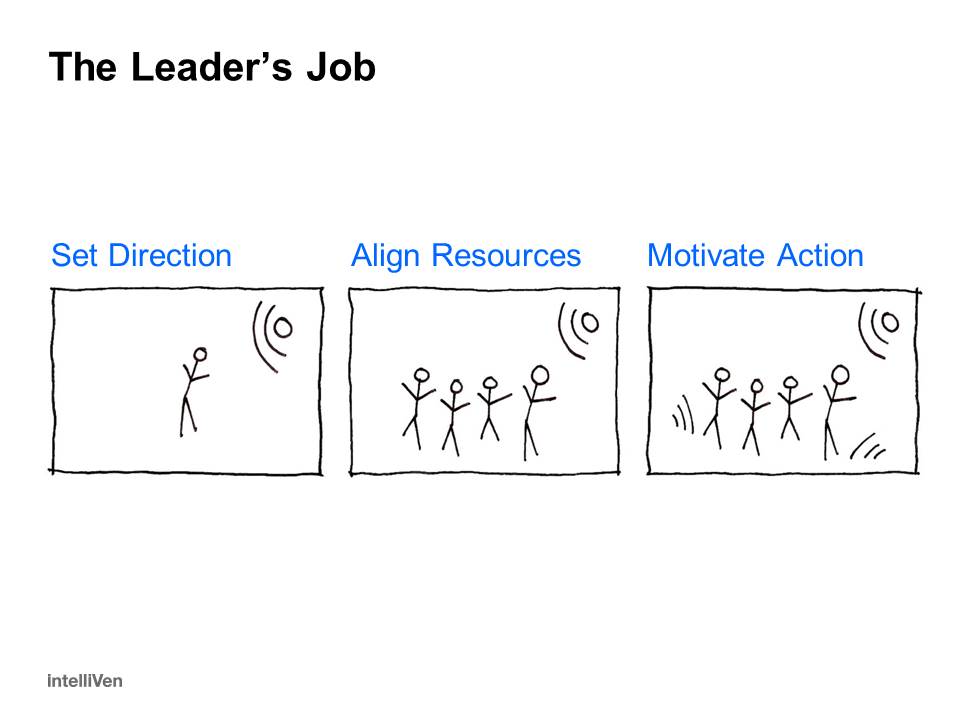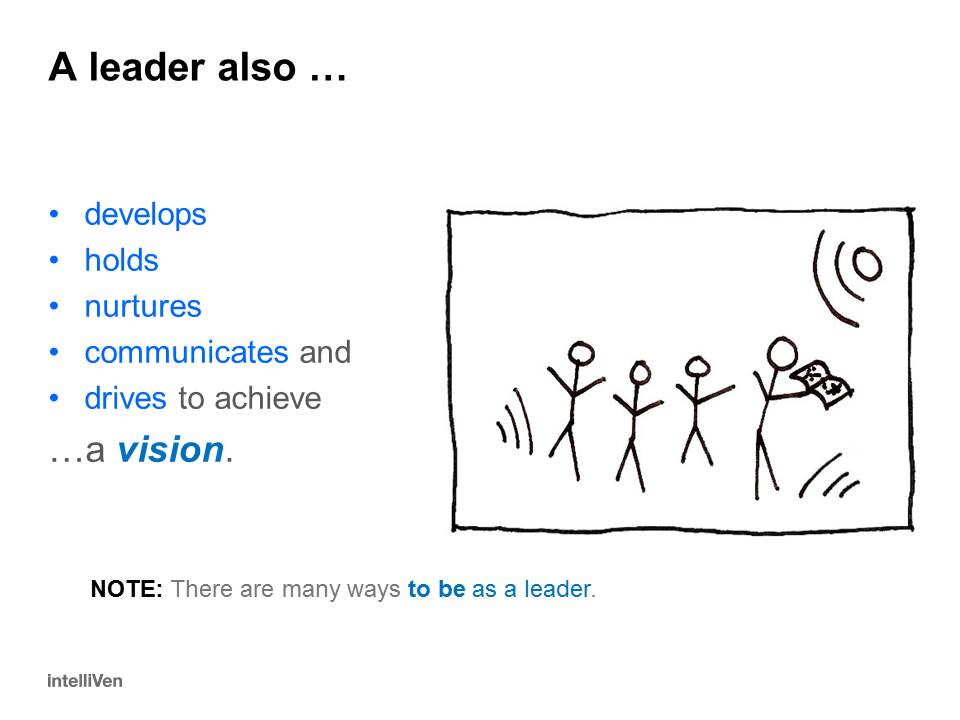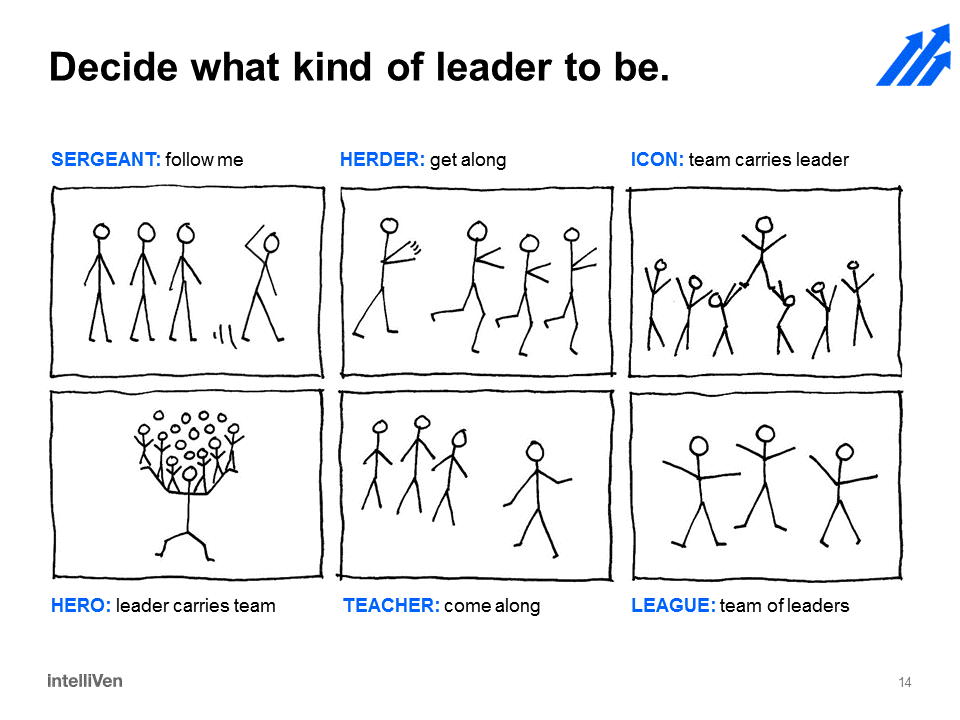As suggested by the illustration in Figure 1, a leader:
- Sets direction represented in the first panel by the target with a bull’s-eye in the middle.
- Aligns resources; that is, the leader collects followers who all look to hit the same target.
- Motivates action, as suggested by the radio bars in the lower corners of the third figure, which causes the resources to progress towards the target.

Another way to say it, as summarized in Figure 2, is that a leader develops, holds, nurtures, communicates, and drives to achieve a vision. Like Harry Potter’s Marauder’s map, the leader holds a map that is always changing, making sense of it, and navigating the course accordingly with the team looking over his/her shoulder.

As straight forward as the above is, it does not tell someone how to lead and there are many ways to lead. That is, there are many ways to behave in the role of leader. There is no one right way to lead in all cases.
A good strategy, popularized by Hersey and Blanchard, is to decide how to lead based on the situation at hand. However, consistency and predictability add to the odds of success. It is not a good idea to be one kind of leader one minute and a different kind of leader the next with the same team. Team members value consistency and predictability in their leader so think carefully about what kind of leader to be and then stick with it.
EXERCISE

Draw a stick figure of a leader in action and share it with classmates or colleagues. Explain the logic behind design elements used in your drawing. Post pictures in on-line or physical work space to share with others. Consider the six-panel sequence of leaders in action depicted in Figure 3 which represent those experienced by the author at different stages of his career.
A wise leader manages him/herself to be the Leader s/he wants to be based on:
- Mission – what is to be accomplished
- Talent – who is on the team to work with
- Time – how much time and other resources there are to work with
- Orientation – what the leader is good at and how the leader prefers to work
This post is excerpted from Manage to Lead: Seven Truths to Help You Change the World which is available in softcover from Amazon and as an iBook from iTunes.
